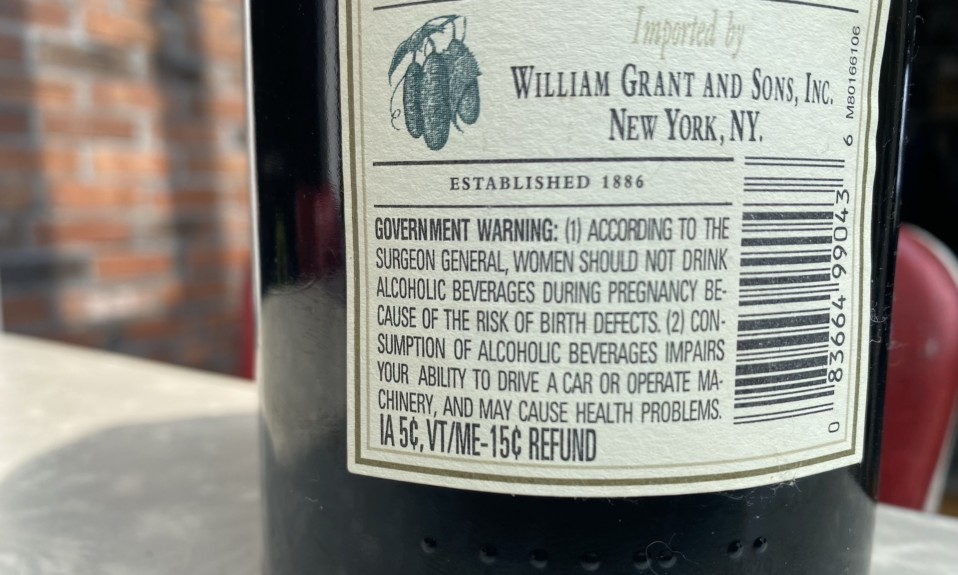Plus: A decrease in adolescent vaping (with caveats), consumer help for navigating treatment insurance, and dental-related opioid risk factors
By William Wagner
May 4, 2021Excessive alcohol consumption is a well-established contributor to domestic violence. Now, according to new research, sexism can be added to the volatile combination.
This week, we also turn our attention to a decline in vaping among teens and young adults in the early months of the COVID-19 pandemic, a consumer resource for navigating insurance appeals, and the glut of opioid prescriptions following dental procedures.
Both gender‐inequitable attitudes and drinking appear to be associated with perpetration of intimate partner violence by men.”—study in “Addiction”
From Addiction:
When Problem Drinking Turns Violent…
Researchers from Australia are seeking to better understand the links between drinking, sexism and intimate partner violence (IPV). For a newly published study in Addiction, they analyzed data from 9,148 males in the Asia-Pacific region who were married to or partnered with females. Their work centered on scoring the men’s gender attitudes on the Gender-Equitable Men (GEM) scale and how those views translated to IPV when alcohol was involved.
The team’s findings? “Both gender‐inequitable attitudes and drinking appear to be associated with perpetration of intimate partner violence by men, with regular heavy episodic drinking increasing the likelihood of intimate partner violence among men with less equitable gender attitudes,” the authors report in Addiction.
From the American Journal of Public Health:
Adolescent Vaping Ebbed Early in the Pandemic
Every week, it seems, we bring you a depressing substance-related tidbit related to COVID. Well, this time around, we have something different to report: Vaping among adolescents declined in the early months of the pandemic (March through June 2020). Researchers from the Schroeder Institute at Truth Initiative surveyed 5,750 teens and young adults to see what impact, if any, COVID had on their use of e-cigarettes. Compared with the three-month period prior to March 2020, there was a 35% decrease among 18- to 20-year-olds and a 28% dip among 15- to 17-year-olds. But the good news might be short-lived. Among the major reasons for the decrease cited in the group’s American Journal of Public Health article was “barriers to [retail] e-cigarette access” due to stay-at-home directives. The subsequent loosening of COVID restrictions throughout the United States seems certain to have adversely affected the trend line.
From The Kennedy Forum and NAMI:
A New Guide for Insurance Appeals
When it comes to addiction treatment, insurance issues are often a headache and, more importantly, a major obstacle to achieving a positive outcome. That’s why The Kennedy Forum and the National Alliance on Mental Illness (NAMI) have released “The Health Insurance Appeals Guide: A Consumer Guide for Filing Mental Health and Substance Use Disorder (MH/SUD) Appeals.”
Many people don’t realize they can actually challenge their insurance plan when they are denied care or forced out-of-network. It is your right to challenge those decisions.”—Daniel H. Gillison Jr., CEO of NAMI
“Many people don’t realize they can actually challenge their insurance plan when they are denied care or forced out-of-network,” Daniel H. Gillison Jr., CEO of NAMI, said upon the release of the guide. “It is your right to challenge those decisions. This guide is intended to help you know your rights and navigate the appeals process to get the affordable care you and your family deserve.”
From the American Journal of Preventive Medicine:
The Dangers of the Dentist
While going to the dentist doesn’t top the list of fun things to do for most people, it’s viewed as a relatively safe medical undertaking. According to a new study from the University of Michigan, however, it doesn’t always turn out to be a benign experience. Researchers point to potential overdose risks for patients who receive an opioid prescription following a dental procedure, as well as for family members who might have access to unused painkillers. In their article in the American Journal of Preventative Medicine, the Michigan team stresses that these dangers often are avoidable: “Opioids are frequently prescribed for routine dental procedures for which acetaminophen and ibuprofen are effective analgesics, such as tooth extraction.” The study states that in 2016, for instance, 11.4 million dental-related opioid prescriptions were written.
Photo: Tobias Tullius














